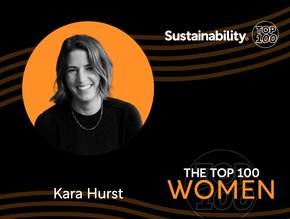Nuclear energy could be the saviour of net-zero strategies

When we say the word ‘nuclear’ this often provokes fear among the majority, because, despite the benefits that it brings to the table, nuclear energy is plagued by past trauma of the people.
Of course, the event that springs to mind is that of the Chernobyl disaster back in 1986, which affected the lives of more than 500,000 nuclear power plant personnel along with the public of an area spanning 150,000 square kilometres—stretching Ukraine, Russia, and Belarus.
Almost 40 years on from the Chernobyl disaster—and over 10 years from the Fukushima Daiichi incident—and governments are looking at ways to incorporate nuclear energy into their sustainability regimes and tap into a highly lucrative source of net-zero energy. Little did the world know that nuclear’s destructive nature would be pitted alongside renewable energy sources and carbon capture solutions to achieve the zero-emission target.
The UK government’s Spring Budget confirms that nuclear power will come to the fore as a method of combating global warming in a turbulent energy landscape. According to its Chancellor, Jeremy Hunt, the UK will classify nuclear fusion as a sustainable source and “help meet the government’s climate commitments”.
This comes as the US widens its research into nuclear fusion, and other countries are also on board with the idea.
Is nuclear power a safe form of net-zero energy generation?
Turning back to the most important subject matter, safety, nuclear energy is now deemed one of the safest forms of power and results in the construction of the most secure facilities in the world—this is according to the United Nations’ (UN’s) International Atomic Energy Agency (IAEA).
When it comes to energy generation, Our World in Data reports statistics on the amount of energy generated by nuclear power. There’s no denying that the most prominent users of nuclear power, including the US, Russia and China, are producing high amounts of energy exceeding 200TWh in 2022.
The commercial benefits of nuclear energy
In the era of electrification, it can be argued that all zero-emission energy sources are lucrative for industries, but aside from the inevitably high output of clean electricity, how sustainable is the nuclear supply chain?
Nuclear fusion plant builders and operators must take into account the supply chain impacts from the construction phase right through to the operational side. The demand on authorities to reduce harmful emissions must not create gaps where emissions are produced in the development phase.
This is where the UK’s budget designs a holistic approach to clean energy, incorporating high-volume, lucrative energy sources into a strategy alongside carbon capture, usage, and storage (CCUS).
The capture of CO2 emissions from processes ensures that all operations leading to zero will indeed be net-zero. Capturing carbon provides a feedstock for other products, or for storage in underground forms to eliminate them from the atmosphere.






